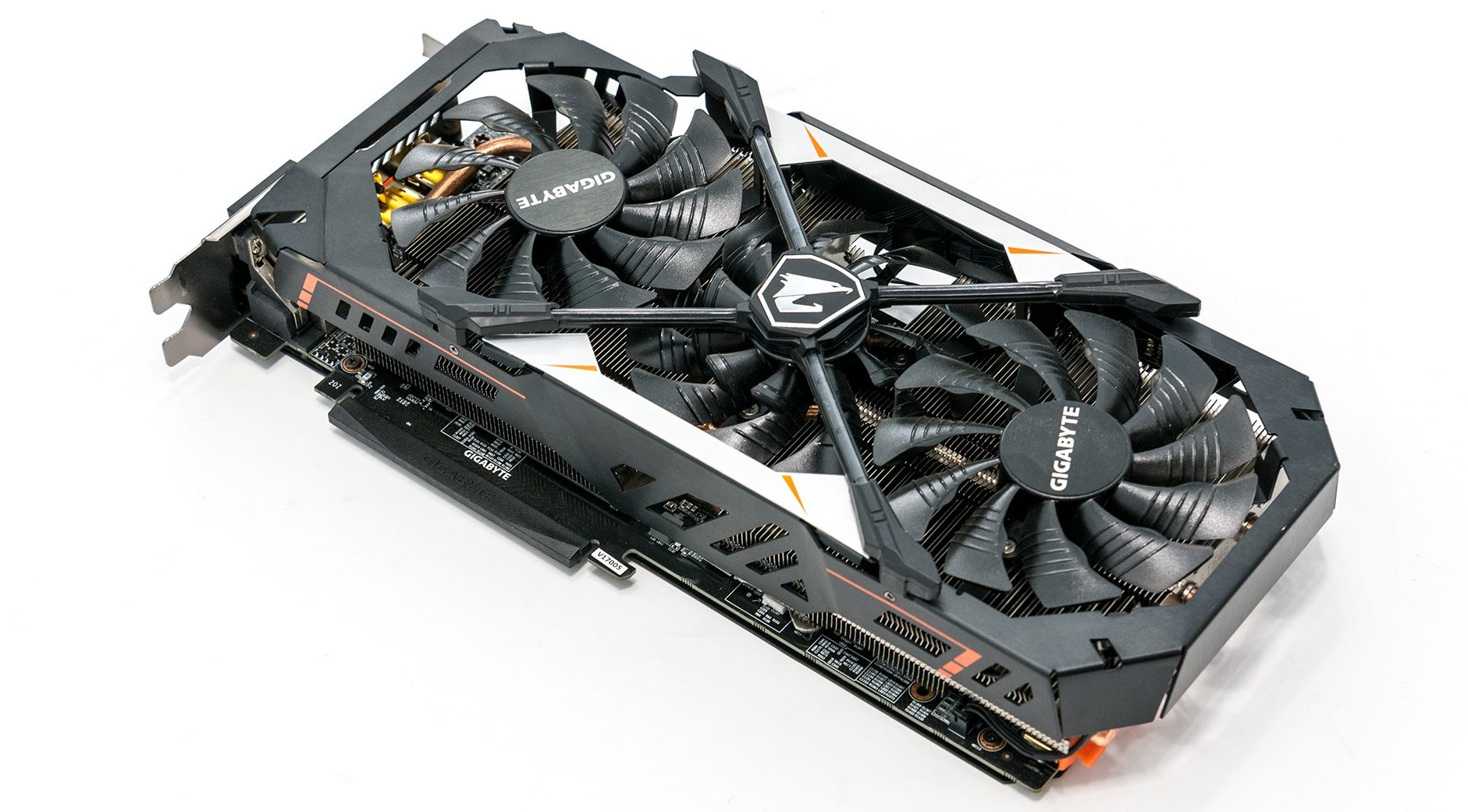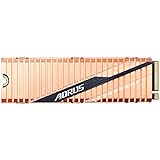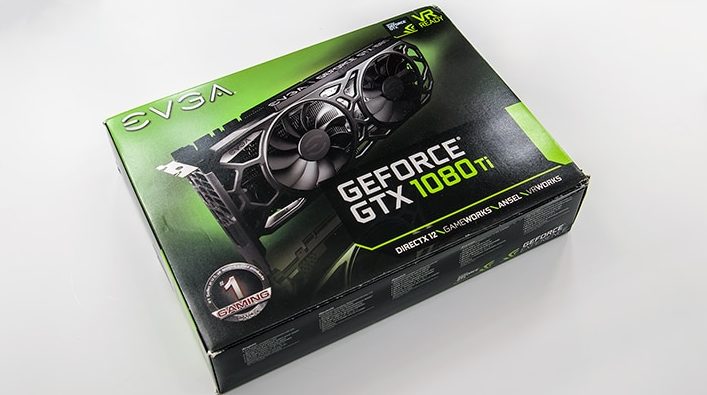
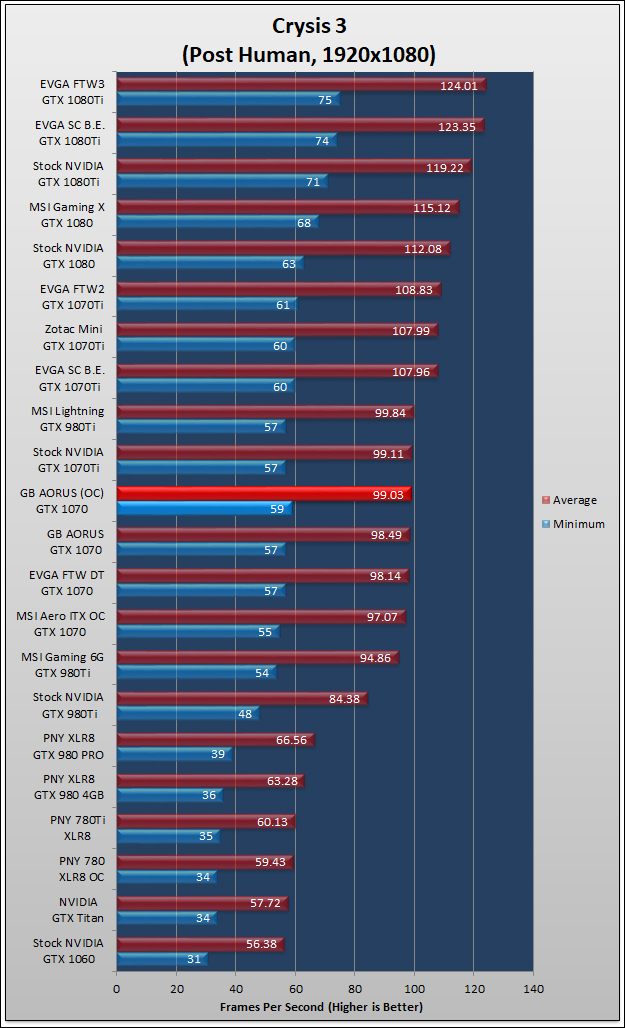
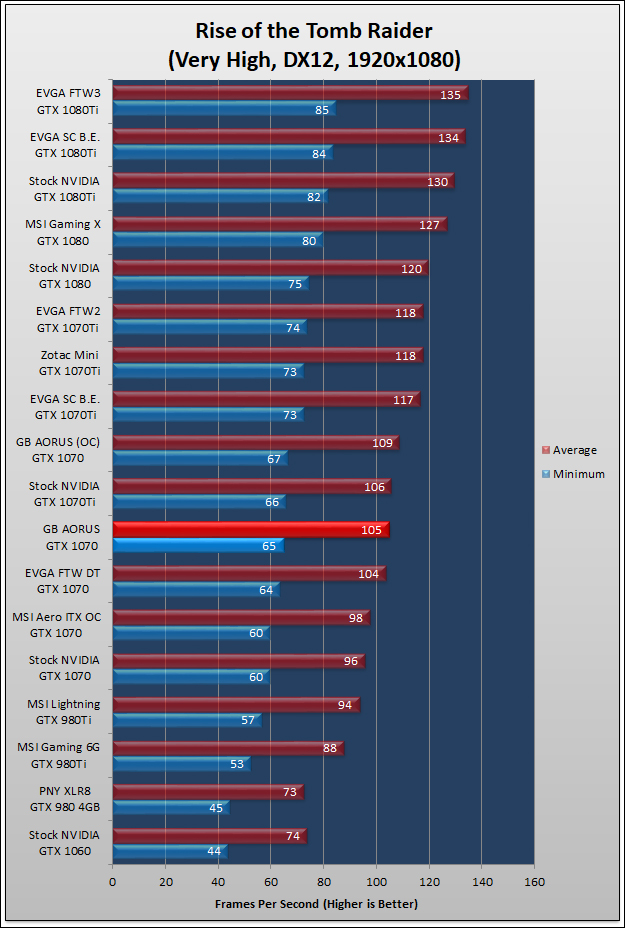
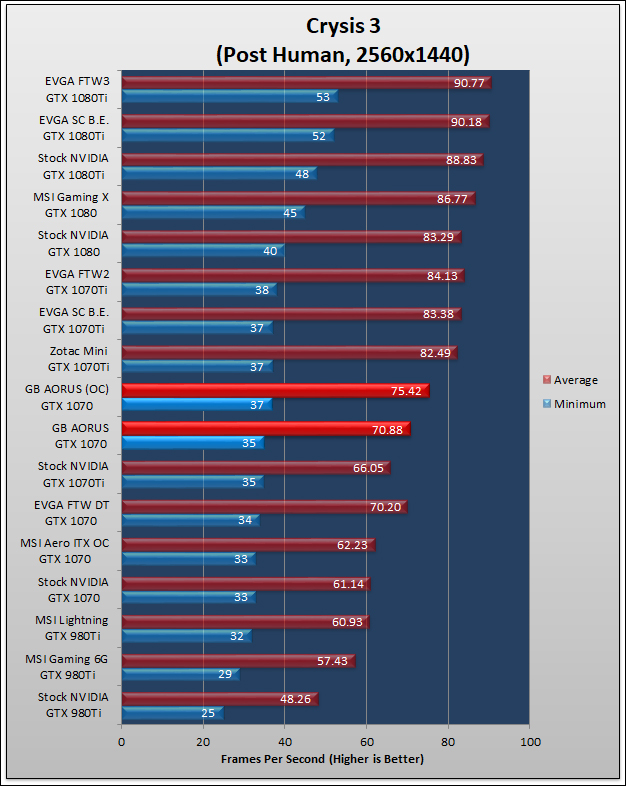
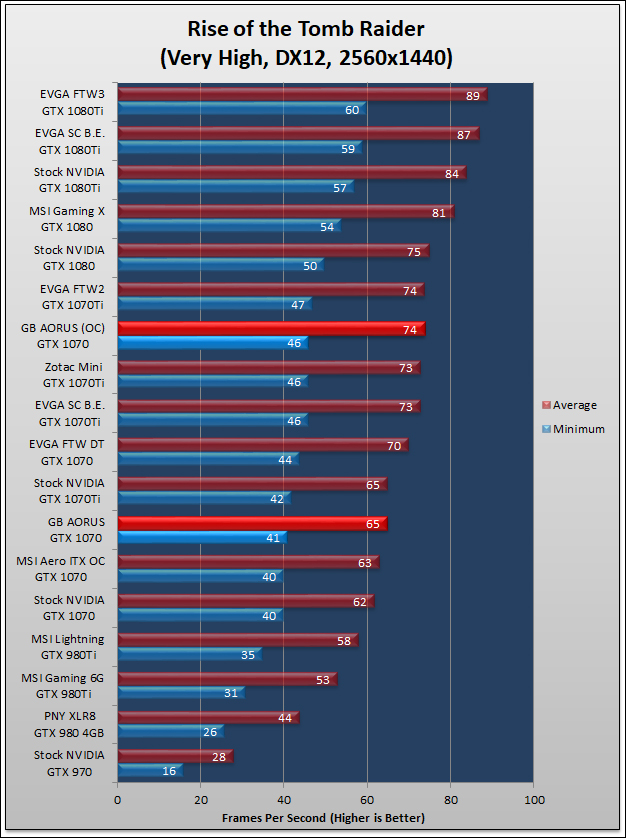
Before we begin we have to acknowledge the angry 800-pound gorilla in the room. This card exemplifies exactly what is wrong with NVIDIA making arbitrary and unilateral decisions for their AIB partners. This card is easily built (and maybe even built better) than the MSI Lightening series of yore. Thanks to its robust power delivery subsystem and 6+8 pin it has clean, stable power to spare… even when max’ed out. In fact, it has more than just ‘power to spare’, 300 watts of power (75+75+150) on tap for a 150 watt card is much like owning a Ferrari and never taking it out of third gear.
Thanks to its downright beefy cooling solution that works extremely well it also will not hit a thermal wall even when pushing the artificial limits NVIDIA has imposed. Terms and phrases like ‘cool running’ do spring to mind. So much so, from an overclocking perspective the only thing missing is a ‘backup BIOS’ and this would be a ‘Lightening Killer’ class card.
Thanks to extremely tight binning the GP104-200 core used on this card is also entering into ‘golden chip territory’. At stock levels it does automatically boost frequencies higher than nearly any GP104-200 we have seen to date. All this makes the limits NVIDIA imposed rather frustrating as we know this card had a lot of gas left in the tank.
With that taken care of, this card is easily one of the most fun cards you will ever work with. It is so easy to hit the absolute limits of what NVIDIA has decreed it is almost giggle worthy. Even novices will be hard pressed to not get the most from this card. The only way you will mess things up is in applying more voltage than is truly necessary… as this card’s temperature will not rise nearly as fast as some when you have pushed past ‘optimal levels’ for a given overclock. Nor will you get the usual indication from the fans when the card is struggling to keep up with overclocking demands. Instead the fans will run quiet even when you have pushed things to the limit.
This however is a double edge sword. There is such thing as ‘too much of a good thing’… for novices who don’t know any better. Too much voltage will degrade the chip if you are not careful and with smaller warning signs it is easy to blow right past them. Novices will also have to be careful with VRAM overclocking. Yes, Gigabyte is using some very good RAM ICs but there are limits. If you are not careful – good cooling or not – novices can ‘burn out’ the chips in under a year. No the chips will not catch fire, but when stressed beyond sensible limits they will start throwing errors after a while. We have seen this, we have even done this. Mainly on mining rigs that are stressed 24/7/365, but going too far is easily the area of largest concern when dealing with this card. Some will get too confident from how easy the core overclocks and push the limits and then some… and pay for it later.
Make no mistake this ‘issue’ is because the core and VRMA are highly binned, and overclocking is so easy. But it is almost like giving a Suzuki Hayabusa to a sixteen-year-old as their first bike. The sky is the limit and if you are not careful… you will end up with a bad case of road-rash. Conversely, and almost perversely, as an experienced over-clocker all these ‘issues’ are exactly what makes this card so good. No real concerns over noise or thermal limits means that you can push this card easily to whatever level of performance you are comfortable with. As an added bonus for the miners out there, this card can easily pull 150+75 from the PCIe cables so even when overclocked to the max it probably is not going to pull anything more than a trickled from the PCIe slot. So worries over being an idiot and powering the PCIe adapter card via any cable you have kicking around probably will not result in a… ‘bad hair day’ fire.
In the end this card is much like that enabler friend who goes ‘yeah have another beer… you can handle it’. It will allow you to basically do any level of overclocking you want… and ‘no limits!!!111’ is heady stuff. Don’t let it go to your head. This card really is only one of a handful of GTX 1070 cards that you have to take firm control of your ‘need for speed’ inclinations and stick to your self-imposed limits. No matter how you slice it, having this ‘problem’ is impressive. Yes, we are nitpicking here. Yes, we probably would complain if we were ‘hanged with a new rope’. But it is something that you need to be aware of as Gigabyte really did do their homework and have proven that they know how to make an overclocking friendly card… even if it did take them 3-slots to do it.
So exactly what did we get in overclocking? On the core we easily got the GP104-200 up to 2088MHz, and on the VRAM we pushed things to 8812MHz (effective). That is an easy 13.8 percent / 253MHz over factory (OC mode) overclocking levels on the core, and 10 percent / 804Mhz on the VRAM. It is also a couple points higher than we feel comfortable pushing our EVGA FTW2 GTX 1070 and ASUS STIX OC GTX 1070 cards. Once again this is not the actual limit of this card… it is the limit on what we think it can do safely 24/7/365 based on how the temperatures and speed of the fans reacted to overclocking. We are talking minor hints here and you will have to pay attention. You will have to take things slowly… as going too far too fast really is easy. So be warned, but enjoy the freedom this card offers.
